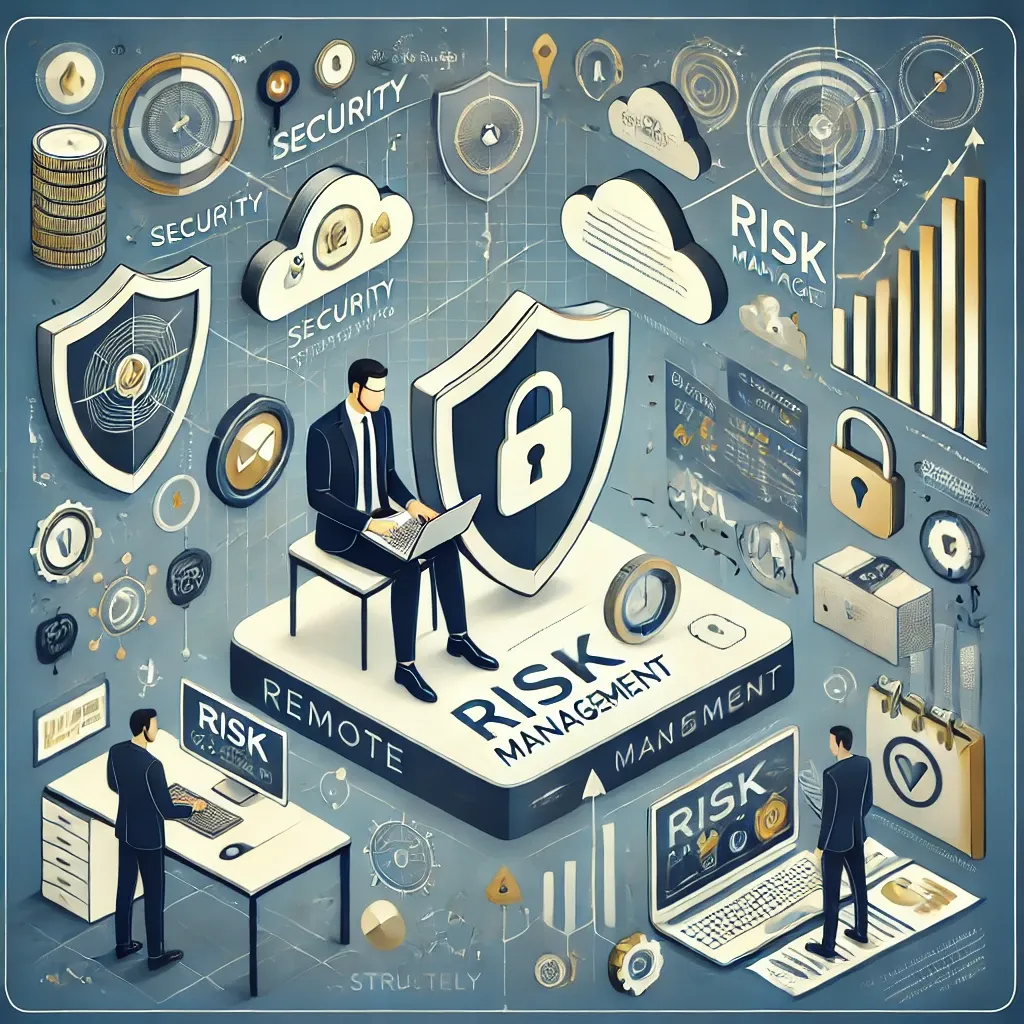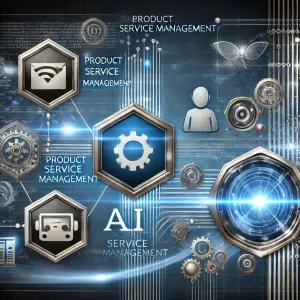Introduction to Remote Risk Management
In today’s fast-paced and increasingly digital world, remote project management has become a vital aspect of how organizations operate. As teams become more dispersed, the need for effective management strategies that accommodate remote work is paramount. Remote project management refers to the practice of overseeing projects from a distance, utilizing digital tools and platforms to coordinate tasks, communicate with team members, and track progress. This approach has gained significant relevance, especially in light of recent global events that have accelerated the shift towards remote work environments.
The concept of the “on-the-go PM” emerges as a response to the demands of managing projects in a remote setting. This term encapsulates the idea of project managers who are not confined to a traditional office space but are instead navigating their responsibilities from various locations, often using mobile devices and cloud-based applications. This flexibility allows for real-time decision-making and responsiveness, but it also introduces unique challenges that require careful consideration.
One of the most critical aspects of remote project management is the importance of risk management. In a remote setting, risks can manifest in various forms, including communication breakdowns, technology failures, and team dynamics issues. The dispersed nature of remote teams can lead to misunderstandings and misalignments, making it essential for project managers to proactively identify and mitigate these risks. Effective risk management strategies are crucial for ensuring that projects remain on track and that teams can adapt to the challenges posed by remote work environments.
Understanding Unique Risks in Remote Project Management
In remote settings, project managers face a distinct set of risks that can significantly impact project outcomes. As organizations increasingly adopt remote work models, it is crucial for risk managers and project managers to identify and categorize these specific risks to navigate challenges effectively. Below are key points that highlight the unique risks associated with remote project management.
1. Communication Breakdowns and Misalignment of Project Goals
One of the most pressing risks in remote project management is the potential for communication breakdowns. The absence of face-to-face interactions can lead to misunderstandings and misinterpretations of project objectives. This misalignment can result in:
- Scope Creep: Without clear communication, project goals may shift, leading to scope creep and resource misallocation [11].
- Lack of Clear Goals: Teams may struggle to establish and maintain clear goals and success criteria, which can hinder project progress [11].
- Lower Quality of Communication: Remote teams often experience lower quality communication, which can prolong project timelines and affect overall efficiency [13].
2. Technology Failures and Cybersecurity Threats
The reliance on technology for remote project management introduces risks related to technology failures and cybersecurity threats. These risks can manifest in several ways:
- System Downtime: Technical issues can disrupt workflows, leading to delays in project timelines and increased frustration among team members [6].
- Cybersecurity Vulnerabilities: Remote work environments can expose organizations to cybersecurity threats, including data breaches and unauthorized access to sensitive information. This necessitates robust security measures to protect project data [6].
3. Team Productivity and Engagement Challenges
Maintaining team productivity and engagement in a remote setting poses significant challenges. Factors contributing to these challenges include:
- Motivation Issues: Remote work can lead to decreased motivation among team members, as the traditional office environment often fosters a sense of accountability and camaraderie [9].
- Monotony and Isolation: The lack of in-person interactions can result in feelings of isolation, which may negatively impact team morale and productivity [9].
4. Monitoring Project Progress and Team Performance
Effectively monitoring project progress and team performance is more complex in a remote environment. Key difficulties include:
- Limited Visibility: Project managers may find it challenging to gain real-time insights into team performance and project status, making it difficult to identify issues early on [10].
- Accountability Challenges: Ensuring accountability among team members can be more difficult when working remotely, as traditional oversight methods may not be as effective [6].
Strategies for Effective Risk Assessment
The landscape of risks is distinct and often more complex than traditional settings. As an on-the-go project manager (PM), it is crucial to adopt a structured approach to identify and mitigate these unique risks. Here are actionable strategies to enhance your risk assessment processes in remote environments:
1. Framework for Identifying Potential Risks
To effectively identify risks specific to remote projects, consider implementing a systematic framework that includes the following steps:
- Risk Identification: Begin with brainstorming sessions involving your team to gather insights on potential risks. Encourage open discussions about past experiences and challenges faced in remote settings. This collaborative approach can uncover risks that may not be immediately apparent [1][13].
- SWOT Analysis: Conduct a SWOT analysis to evaluate the strengths, weaknesses, opportunities, and threats related to your project. This method helps in understanding internal and external factors that could impact project success, particularly in a remote context [2][13].
- Pre-Mortem Analysis: Organize pre-mortem workshops where team members envision worst-case scenarios. By asking “what if” questions, you can identify potential failure points early in the project lifecycle, allowing for proactive risk management [4][12].
2. Importance of Regular Risk Assessments and Updates
Regular risk assessments are vital in a remote work environment due to its dynamic nature. Here’s why:
- Continuous Monitoring: The remote work landscape is constantly evolving, and risks can change rapidly. Schedule periodic evaluations of your risk management processes to ensure that your strategies remain relevant and effective [10][12].
- Adaptation to New Challenges: As new challenges arise, such as changes in team dynamics or technology, updating your risk assessments allows you to adapt your strategies accordingly. This proactive approach helps in maintaining project resilience [10][12].
3. Tools and Methodologies for Risk Analysis
Utilizing the right tools and methodologies can significantly enhance your risk analysis capabilities:
- Risk Matrices: Implement risk matrices to prioritize identified risks based on their severity and likelihood. This visual tool helps in making informed decisions about which risks require immediate attention and which can be monitored over time [6][14].
- Digital Risk Audits: For remote transitions, consider conducting digital risk audits to assess exposure effectively. This involves evaluating the digital tools and platforms used by your team to identify vulnerabilities and areas for improvement [5][12].
- Project Management Software: Leverage project management software that includes risk management features. These tools can help track risk status, facilitate communication among team members, and provide dashboards for real-time monitoring [11][12].
By implementing these strategies, risk managers and project managers can navigate the challenges of remote project management more effectively. A structured approach to risk assessment not only enhances project outcomes but also fosters a culture of proactive risk management within remote teams.
Mitigation Techniques for Remote Project Risks
Unique challenges arise that can significantly impact project outcomes. As project managers navigate these complexities, it is essential to implement effective risk mitigation techniques tailored to remote environments. Here are some practical strategies to address the risks associated with remote project management:
- Implementing Robust Communication Tools and Protocols: Effective communication is the backbone of successful remote project management. Utilizing advanced communication tools such as Slack, Microsoft Teams, or Zoom can facilitate real-time collaboration and information sharing. Establishing clear communication protocols, including regular check-ins and updates, ensures that all team members are aligned and informed about project developments. This proactive approach helps to minimize misunderstandings and keeps the project on track.
- Establishing Clear Roles and Responsibilities: In a remote setting, ambiguity can lead to confusion and inefficiencies. Clearly defining roles and responsibilities within the team is crucial. This can be achieved by creating a RACI (Responsible, Accountable, Consulted, Informed) matrix that outlines who is responsible for each task and decision. By doing so, team members understand their specific contributions, which enhances accountability and streamlines project execution.
- Developing Contingency Plans for Technology Failures and Cybersecurity Incidents: Technology is a double-edged sword in remote project management. While it enables collaboration, it also introduces risks such as system failures and cybersecurity threats. To mitigate these risks, project managers should develop comprehensive contingency plans. This includes identifying critical technology dependencies, establishing backup systems, and implementing cybersecurity measures such as regular software updates and employee training on security best practices. Having a plan in place ensures that the team can quickly respond to and recover from any technological disruptions.
- Fostering a Culture of Accountability and Transparency: A strong team culture is vital for remote project success. Encouraging accountability and transparency among team members fosters engagement and trust. This can be achieved by setting clear expectations, providing regular feedback, and recognizing individual and team achievements. Creating an environment where team members feel comfortable sharing challenges and successes promotes open communication and collaboration, ultimately leading to better project outcomes.
By implementing these mitigation techniques, project managers can effectively navigate the unique risks associated with remote project management. These strategies not only enhance team performance but also contribute to the overall success of projects in a remote setting.
Leveraging Technology for Risk Management
The ability to effectively manage risks is paramount. As project managers navigate the complexities of virtual teams and dispersed resources, technology plays a crucial role in mitigating potential challenges. Here are some key points on how technology can enhance risk management in remote settings:
- Project Management Software: Utilizing robust project management software is essential for tracking and reporting risks. Tools like ProjectManager and Asana provide features that allow project managers to identify, assess, and monitor risks in real-time. These platforms often include dashboards that visualize risk data, making it easier to communicate potential issues to stakeholders and team members. By centralizing risk information, project managers can ensure that everyone is on the same page and can respond swiftly to emerging threats [10][11].
- Collaborative Tools: Effective communication is vital in remote project management, and collaborative tools such as Slack, Microsoft Teams, and Trello enhance this aspect significantly. These platforms facilitate seamless communication among team members, allowing for quick discussions about risks and their implications. Additionally, they improve project visibility by providing a shared space where updates, documents, and risk assessments can be accessed by all team members. This transparency helps in fostering a proactive approach to risk management, as team members can easily share insights and observations that may indicate potential risks [8][9].
- Automation Solutions: Automation is a game-changer in monitoring project metrics and risks. Tools that automate data collection and reporting can save time and reduce human error. For instance, software that integrates with project management systems can automatically track key performance indicators (KPIs) and alert project managers to deviations from the plan. This allows for timely interventions and adjustments, ensuring that risks are managed before they escalate into more significant issues. Automation not only streamlines the risk management process but also empowers project managers to focus on strategic decision-making rather than getting bogged down in manual tracking [12][15].
Conclusion: The Future of Risk Management for On-the-Go PMs
In remote settings, it is crucial to recognize and address the unique risks that arise. As project managers navigate the complexities of managing teams and projects from various locations, they encounter challenges that require proactive strategies and innovative solutions. Here are the key takeaways regarding the future of risk management for on-the-go PMs:
- Recap of Unique Risks: Remote project management introduces specific risks such as communication breakdowns, time zone challenges, and difficulties in team cohesion. These factors can lead to misunderstandings, delays, and decreased productivity. Addressing these risks proactively is essential to ensure project success and maintain team morale. By identifying potential pitfalls early, project managers can implement strategies to mitigate these risks effectively.
- Continuous Learning and Adaptation: The dynamic nature of remote work necessitates a commitment to continuous learning and adaptation. Project managers must stay informed about emerging trends, tools, and methodologies that can enhance their risk management practices. This includes leveraging technology for better communication, utilizing project management software for tracking progress, and fostering a culture of feedback and improvement within teams. Embracing a mindset of adaptability will empower project managers to respond to challenges swiftly and effectively.
In conclusion, as the landscape of project management continues to evolve, the importance of addressing unique risks in remote settings cannot be overstated. By proactively managing these risks, committing to continuous learning, and fostering collaboration among peers, on-the-go PMs can navigate the challenges of remote project management with confidence and success.
Find out more about Shaun Stoltz https://www.shaunstoltz.com/about/.
This post was written by an AI and reviewed/edited by a human.



